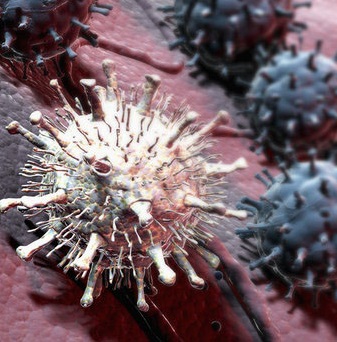Tiny triggers prompt mutant flu's shift
 A new study has laid eyes on a particular influenza virus, looking for new ways to head off mutations at the pass.
A new study has laid eyes on a particular influenza virus, looking for new ways to head off mutations at the pass.
Findings published in the journal Science could lead the way to a type of drug that can stop a virus from mutating before it even starts.
A team of researchers including leading authority Dr Ian Barr, deputy director of the WHO Collaborating Centre for Reference and Research on Influenza in Melbourne, focussed their efforts on Influenza A/H3N2.
This particular strain has been infecting people around the world since about 1968.
“Every few years we have a big outbreak of this particular virus,” says Dr Barr.
“For example in 2012 we had quite a big influenza season and the majority of that influenza was caused by this type of virus.”
“The virus can evolve in a number of different directions,” Dr Barr said.
“If we can narrow that down to a small number of directions then we've got a better chance of trying to work out which particular virus might be the one which is going to turn up in a year's time.”
Dr Barr and the research team surveyed the changes in hemagglutinin, the protein which helps H3N2 bind to cells, between 1968 and 2003.
It turns out that mutations in just seven amino acids of the 566 amino acids that make up hemagglutinin forced the evolution of a new form of the virus.
“Nine out of 10 of the big changes were due to these seven amino acids,” Dr Barr says
The lead researcher has suggested that the findings could help develop more dynamically-active drug treatments.
“Maybe we're starting to see a basis whereby people just may be able to anticipate the sort of changes that could be important,” says Dr Alan Hampson, chairman of the Influenza Specialist Group.
“It gives us a focus on looking for important mutations in the virus.”








 Print
Print